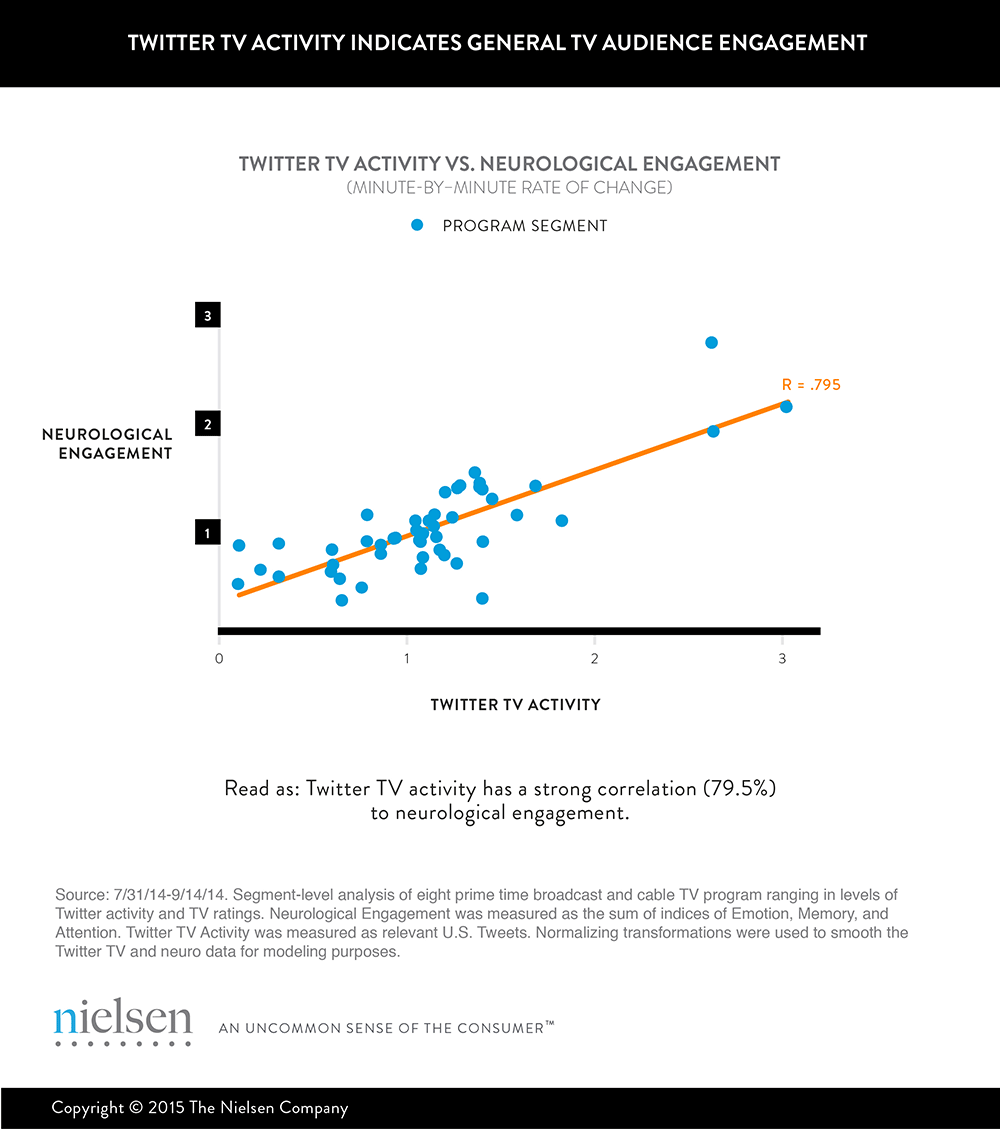 It is well established that networks, agencies, and advertisers can better understand how audiences on Twitter are interacting with TV programming by delving into the endless conversations taking place there. Now, new research shows that Twitter TV activity can also tell us just how engaged the general viewing population is with the programming it watches. In fact, it now stands as a bellwether for general audience engagement.
It is well established that networks, agencies, and advertisers can better understand how audiences on Twitter are interacting with TV programming by delving into the endless conversations taking place there. Now, new research shows that Twitter TV activity can also tell us just how engaged the general viewing population is with the programming it watches. In fact, it now stands as a bellwether for general audience engagement.
What does that mean? In short, it means that increases in conversation on Twitter during live programming signal that there is high engagement with programming among the general viewing audience.
This new learning is the result of a study that Nielsen conducted leveraging its proprietary consumer neuroscience technology and measurement of Twitter TV activity. Nielsen Social analyzed minute-by-minute Twitter activity (i.e., Tweets) around live airings of eight prime time broadcast and cable TV shows with varied levels of Twitter activity and TV ratings. Separately, Nielsen Neuro monitored the brain activity of nearly 300 viewers as they watched new episodes of those programs. Nielsen Neuro, which commonly studies engagement with advertising, used its standard measurements of emotion, memory and attention to track participants’ engagement with episodes. Minute-by-minute Twitter TV activity and brain activity were then analyzed side-by-side across segments of each program to understand whether increases and decreases in Twitter activity were correlated with viewers’ neurological response to the programming.
Nielsen found that changes in Twitter TV activity are strongly correlated (79.5%) with neurological engagement. More specifically, the study identified emotion, memory and attention as the specific neurometrics tied to Twitter TV activity. This finding is notable for three reasons. First, the fact that Twitter TV activity is correlated with the combination of these three neurometrics signals that program content is engaging viewers through multiple psychological processes. Second, other Nielsen Neuro research has shown that the combination of these same key neurometrics is correlated with sales outcomes in ad testing. Third, Nielsen TV Brand Effect research has also shown that ads perform better on memorability in TV programs with high program engagement. Combined, these findings suggest that advertising in highly social programs could be an opportunity to drive both ad memorability and sales outcomes.

There are three major implications from this study:
TV networks can view Twitter TV activity around a program’s live airing as a bellwether for understanding how engaged TV audiences are with programming (overall, and minute-by-minute as programs unfold).
Agencies and advertisers can look to Twitter TV metrics as a part of the media planning and buying process to identify shows with engaged audiences and, by extension, opportunities to increase ad memorability and sales outcomes.
With brain activity predicting social response, networks and content producers can use neurological testing separate of or as a complement to existing testing practices to optimize programming.
While many industry studies have explored the relationship between social TV activity and audience tune-in and the relationship between second screen social behavior and viewer engagement, this research suggests another way for networks, agencies and advertisers to value TV-related conversation on Twitter: this time, not as a measure of social activity in and of itself, but rather as a bellwether for general audience engagement. This insight can be applied across the TV industry to more holistically understand audiences’ response to content and develop further practical insights in the areas of both social TV and consumer neuroscience.


